Developing Ultrathin Dolby Atmos® Enabled Speaker Technology for Home Entertainment Systems
Three-dimensional (3D) surround sound technology creates a premium and fully immersive audio experience for consumers.
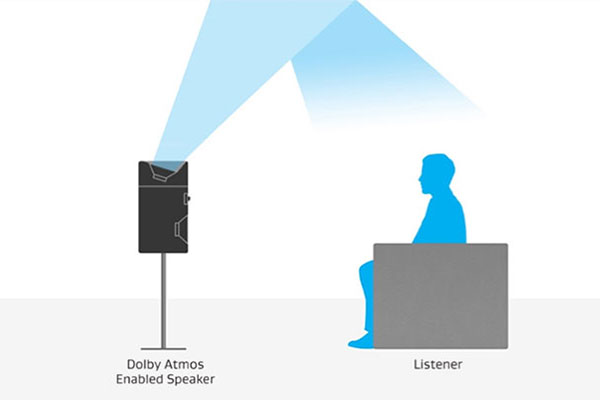
Latest News
April 20, 2021
In 2014, Dolby Laboratories introduced Dolby Atmos® enabled speaker (DAES) technology for home theater systems and later expanded this technology for soundbar products. Now they are developing DAES technology for TVs to push the boundaries of what is possible for immersive home audio technology.
The Science of Dolby Atmos® Enabled Speakers
To reproduce realistic overhead sound, DAES technology employs an upward-firing speaker design to radiate sound upward to reflect off the ceiling, as shown in Figure 1. Perceptual filtering is applied to these speakers to amplify their sense of elevation, allowing consumers to perceive the location of sound origination as the point of reflection in the ceiling and not the physical speaker location. “If you have traditional TV speakers, you will hear the speaker's sound emitting right in front of you from the TV. With Dolby Atmos® enabled TV speakers, you will hear overhead sound coming from the ceiling,” said Lakshmikanth Tipparaju, a senior acoustic system and transducer engineer at Dolby Laboratories.

Figure 1. A sketch of a conventional (large form factor) height channel speaker.
Design Challenges for Ultrathin TV Speakers
Slim form factor TV design constraints make it difficult to design DAES for TVs. As TV designs are made more compact, the shape and area available for the upward-firing speaker diaphragm, which is closely coupled to a boundary surface, becomes more restricted by the thickness of the TV, resulting in a narrow height channel ceiling image.
Designing slim Dolby Atmos® enabled TV speakers that are able to provide large sweet spot coverage around the typical position of a listener is a key challenge, according to Tipparaju. “A sweet spot coverage area is the region where we can consistently perceive height channel image on the ceiling. The ceiling image is compromised when we move away from the sweet spot coverage area,” said Tipparaju.
In order to design a DAES that is both thin enough to be built into modern televisions and provides large sweet spot coverage, Dolby Laboratories turned to acoustics simulation. Tipparaju believes a key benefit of simulation technology is that it allows him to evaluate the performance of new speaker designs prior to building and testing an actual physical prototype — saving valuable time and resources.
Acoustical FEM and BEM Analyses
Using acoustics modeling in the COMSOL Multiphysics® simulation software, Tipparaju explored several different upward-firing speaker design concepts for optimizing the sweet spot coverage. To meet the ultrathin design constraints, they incorporated an ultrathin microtransducer (90 millimeters by 15 millimeters) into the design of the speaker. In addition, they added an acoustic reflector into the speaker's design to efficiently redistribute acoustic energy toward the ceiling — ultimately improving the speaker’s sweet spot coverage area in the process.
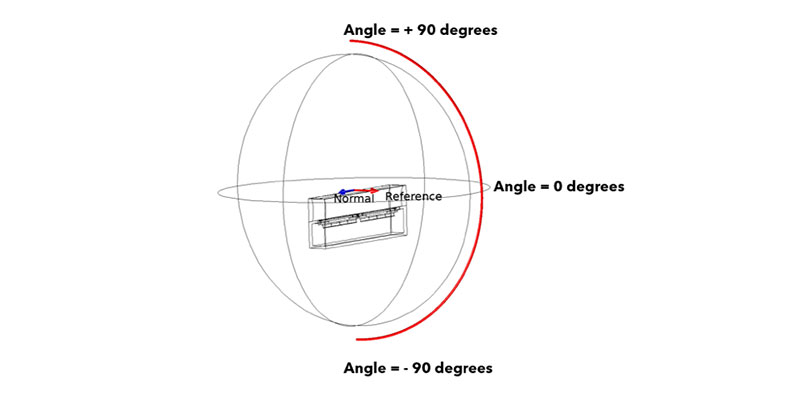
Figure 2. Slim height speaker with integrated acoustic reflector — directivity evaluation plane.
With acoustic finite element method (FEM) and boundary element method (BEM) functionality in the Acoustics Module, an add-on to COMSOL Multiphysics®, Tipparaju optimized the acoustic reflector topology to create an asymmetric radiation pattern to maximize the energy distribution along the ceiling direction (0 degrees to +90 degrees) and to sufficiently attenuate the direct sound (0 degree to -90 degrees) to the listener, as shown in Figure 2.
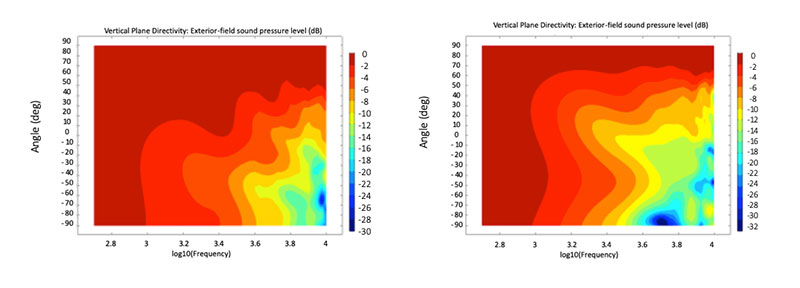
Figure 3. Simulated vertical plane directivity comparison of a slim height speaker with an integrated reflector (top) and a conventional slim height speaker without a reflector (bottom). Here, it is shown that the speaker with the reflector has a wider coverage for ceiling reflection.
An FEM study was performed to optimize the acoustic reflector topology based on the vertical plane directivity in free-field, while a BEM analysis was used to numerically assess the directional response benefits of the acoustic reflector, considering TV panel integration constraints and ceiling reflections. “We want to ensure that there is uniform height channel coverage around a listener's position,” said Tipparaju. Being able to evaluate sound pressure distribution along a ceiling in simulations is very valuable, as it helps to determine the optimal left and right speaker module spacing and transducer architecture, according to Tipparaju.
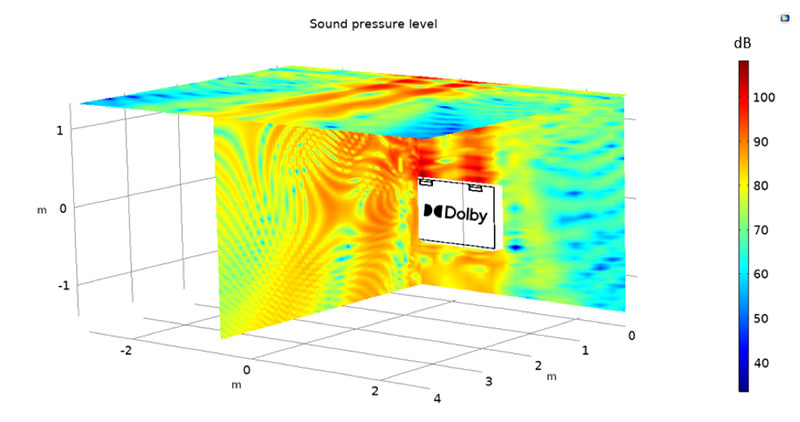
Figure 4. A multislice plot depicting SPL distribution at 10 kHz in COMSOL Multiphysics®.
Validating the Results with a Near-Field Scanner
Based on the simulation results, physical prototypes of the slim height channel speaker with an integrated acoustic reflector were built for testing and validation. The free-field sound pressure results of the FEM study were validated with experimental results from a Klippel Near-Field Scanner (NFS) measurement system. Overall, Dolby Laboratories was able to determine that an integrated acoustic reflector can significantly improve the immersiveness of slim height channel speakers.
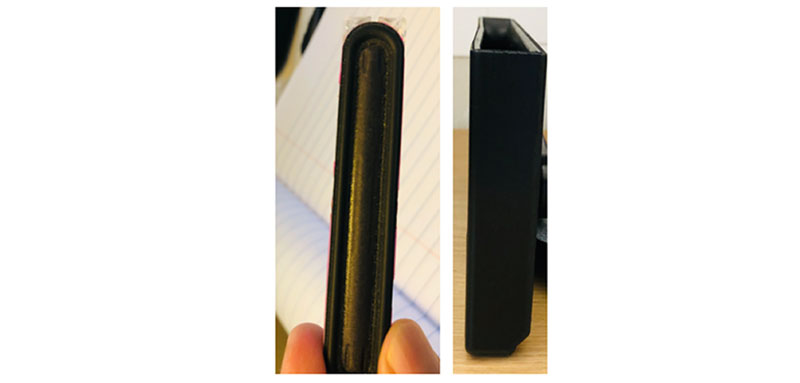
Figure 5. Prototype of the ultrathin microtransducer (left) and an ultrathin DAES with a 1 inch thickness (right).
In the future, Dolby plans to develop Dolby Atmos® enabled speaker technology for the smart speaker and wireless speaker market.
Acknowledgement
Lakshmikanth Tipparaju would like to thank his manager John Stewart, his colleagues within the Enhanced Consumer Devices Innovation team, and Atmos TV product management within Dolby for supporting this work.
Dolby Atmos is a registered trademark of Dolby Laboratories Licensing Corporation.
More COMSOL Coverage
Subscribe to our FREE magazine, FREE email newsletters or both!
Latest News






